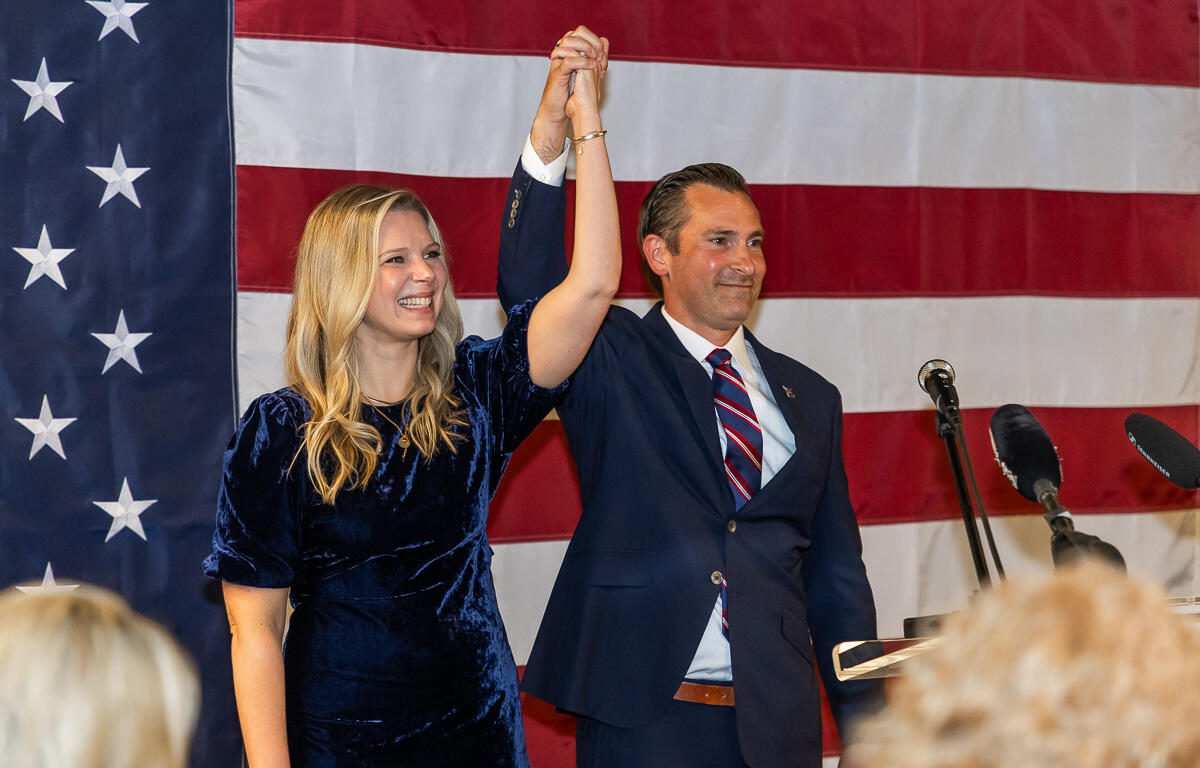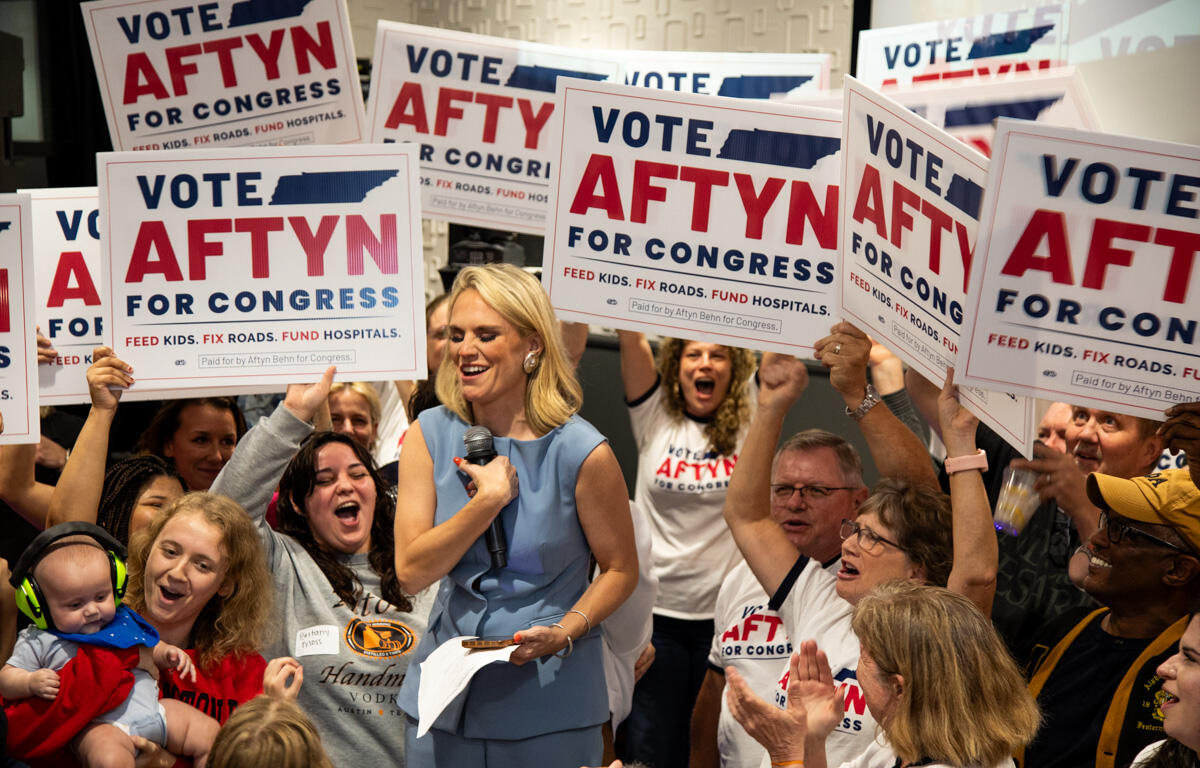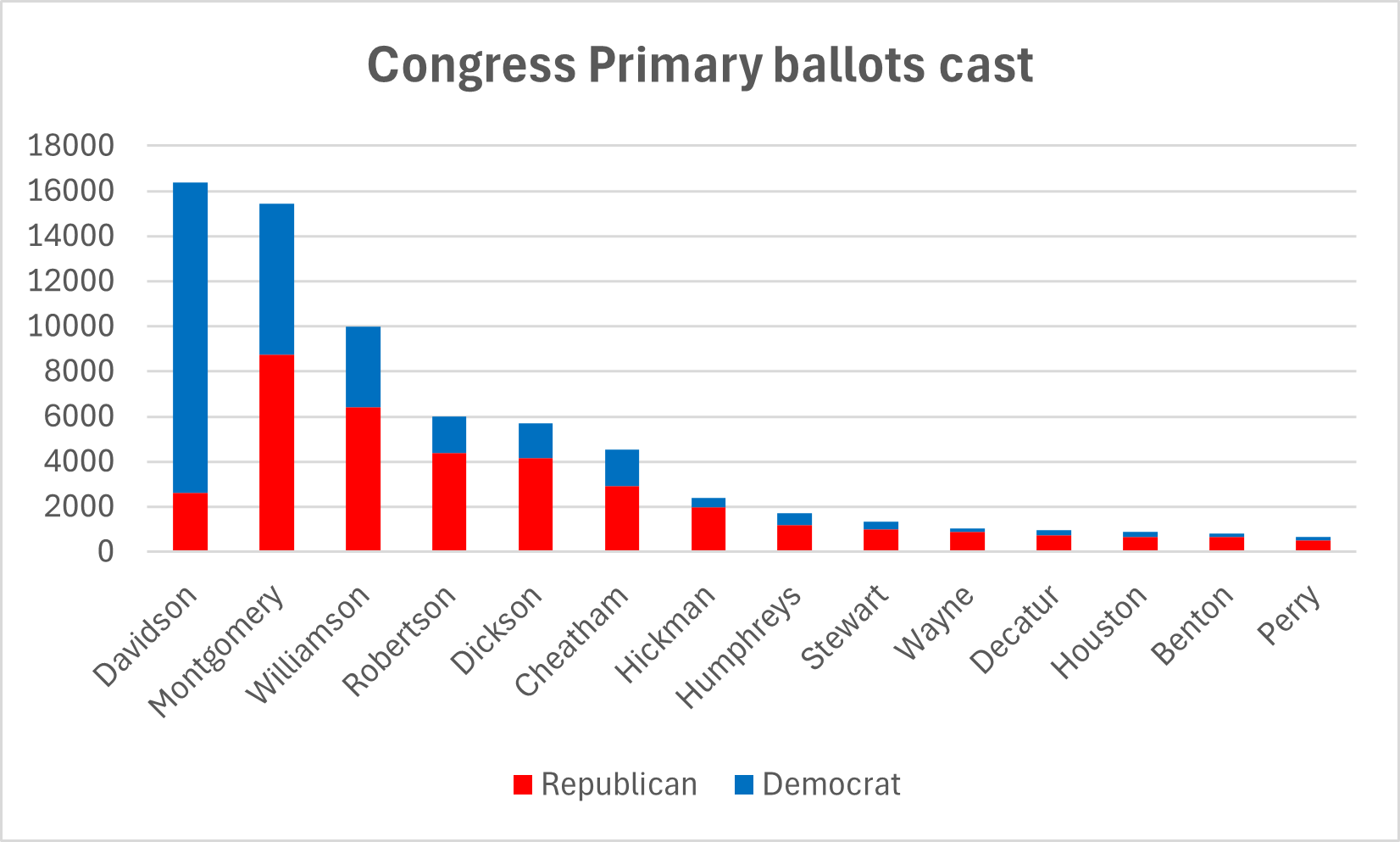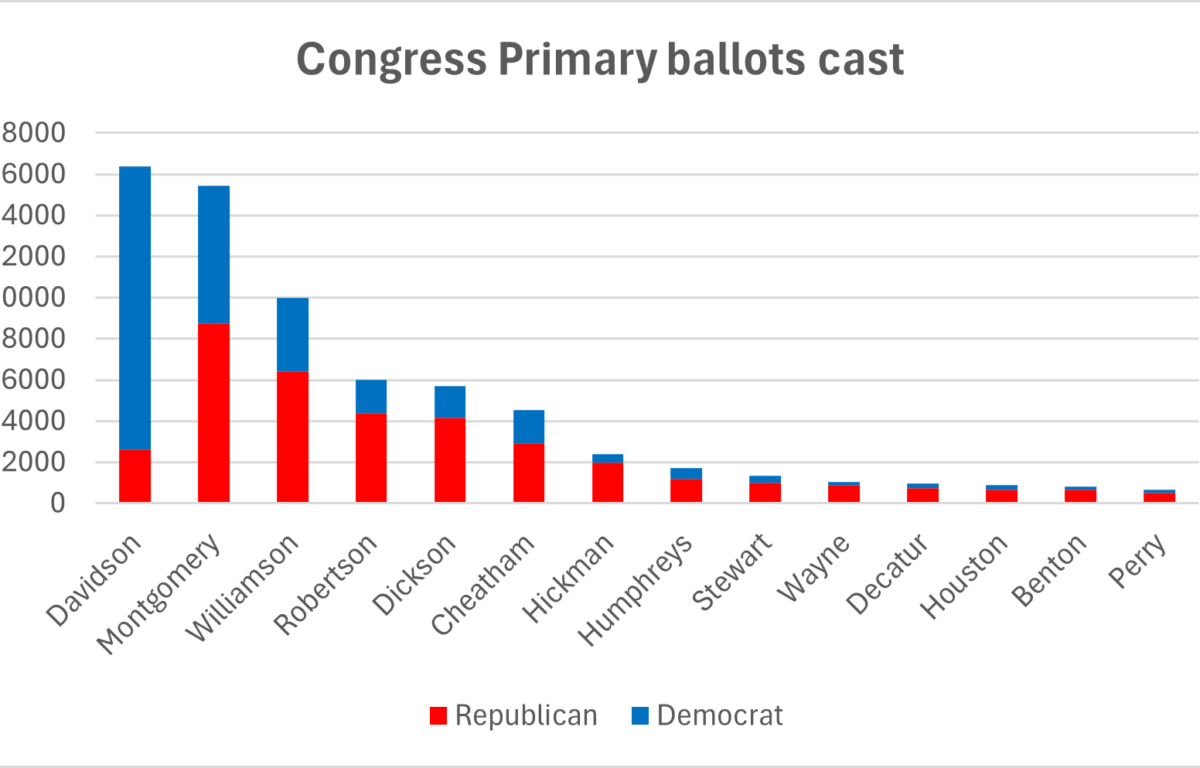CLARKSVILLE, TN (CLARKSVILLE NOW) – Tuesday night’s Congressional Primary special election had lots of drama, including a surprise upset that turned out to be nothing, a four-way neck-and-neck race, and the emergence of Montgomery County as a pivotal battleground for who wins in December. Here are four highlights from Election Night:
1. Clarksville took center stage for Congress primary winners
Both of the primary winners – Matt Van Epps and Aftyn Behn, both of Nashville – set up camp in Clarksville for their Election Night watch parties. Van Epps’ campaign gathered at Shelby’s Trio, and Behn’s at Gray Fox Bar & Lounge.

This was sweet news for Clarksville Now, since we didn’t have capacity to send half our team to Franklin, and the candidates who were here ended up being the candidates who won.
That simple location choice on both ballots had a few implications:
- It put Clarksville in the national spotlight for an election that could have an impact on President Trump’s agenda, with a Trump-endorsed candidate in the race.
- It’s a signal that the candidates recognize that Montgomery County – moreso than Nashville or Williamson County – will be pivotal to who wins the day in December.
| MORE: Full Congressional Primary results

2. Van Epps wins in landslide, Behn in tight race
Election night started with excitement. On the crowded Republican ballot with 11 candidates, Van Epps had the trifecta of endorsements: from outgoing District 7 Congressman Mark Green, from Gov. Bill Lee, and of course from President Donald Trump. Yet the first returns were a surprise, with Jody Barrett of Dickson in the lead. But when the second batch of results landed, it was clear that the first batch must have been from Dickson, because Van Epps pulled away. He ended up with 19,000 votes, more than double Barrett, who came in second with 9,300.
The Republican primary was extremely nasty, with mailers and texts full of personal attacks against multiple candidates. But Tuesday’s landslide, Republicans shouldn’t have much trouble rallying voters behind one candidate for the general election.

On the four-way Democratic side, things were much more exciting. The lead flipped several times Tuesday night among Bo Mitchell, Darden Copeland and Aftyn Behn, and Vincent Dixie remained in a close fourth. Behn ultimately won with 8,600 votes. Not far behind were Copeland (7,700), Mitchell (7,400), and Dixie (7,100). And Behn didn’t win in Montgomery County – that went to Copeland with 31.9% to Behn’s 28.8%.
Part of the challenge now for Behn will be to pull together that disparate support to unite Democrats for the general election.
| MORE: ‘Tennessee is ready for a new kind of Democrat’: Behn wins nomination in Congress race | PHOTOS

3. Why is Montgomery County critical to Congress race?
Because of the way District 7 is laid out – a stretch of Middle Tennessee from state line to state line – Montgomery County plays a major role. The main population areas are Montgomery County and about half each of Davidson and Williamson Counties. Tuesday night, Davidson brought in the most total votes with 16,300, but followed closely by Montgomery with 15,400.
By party, though, Montgomery is far more important to Republicans. We had the most Republican ballots with 8,700, followed by Williamson at 6,400. Of the 14 counties in the district, Davidson had the 6th most Republican ballots, with only 2,600.
On the Democratic side, Davidson was the biggest player with a whopping 13,700 ballots in a solid-blue area. But coming in next was Montgomery with 6,700, followed in a distant third by Williamson with only 3,500.

As the second-largest and most “purple” of the District 7 counties, Montgomery County will be a critcal battleground in the Dec. 2 general election.
As a whole, the district was fairly evenly split Tuesday night, with 36,800 Republican ballots cast (54%) and 31,002 Democratic (46%). Depending on voter turnout, the upcoming general election could be close.
4. What was voter turnout in Montgomery County?
Voter turnout in Montgomery County for this single-position special election primary was 10.25%, which is either encouraging or depressing, depending on how you look at it.
Turnout varies greatly, based on the type of election. A look at the Montgomery County numbers going back to 1994 shows that presidential elections have turnouts of 50% to 65%. For state and county primaries, the results are usually 10% to 20%.
The last single-position special election in Montgomery County was in 2019 to elect Mark Green’s replacement in the state Senate when he went to Congress. The primary turnout was 6.5%, and the general election was 9.6%.
So comparing apples to apples, turnout for this one was much better than our last special election primary, but it still barely squeaked past single-digits.


